Spiny McSpleen's Nifty

Webpage
In 2003, the successor to SimCity 3000 was released. Entitled, SimCity 4, the game improved on many features introduced by its predecessor, such as an elevated rail system that could connect to the subway, and varying types of airports. It also introduced a number of completely new features, such as urban decay, regions, and God Mode.
SimCity 4 had one expansion pack released for it, called Rush Hour. Though other expansion packs were discussed, only the one was ever released. SimCity 4 was made obsolete by SimCity Societies in 2007.
REGION VIEW
A new feature to SimCity 4 was the region. A region is divided into many smaller sectors where cities can be built. Akin to The Sims's Neighbourhood View, Region View allows one to see all of the cities one has developed in the region. In this view, one may see a satellite image of the cities or a map that shows roads, highways, and rails, among other things.
If enough cities are built up to the absolute edges of their individual sectors, the illusion of a gigantic metropolis is created in Region View.
When one creates a new region, along with assigning a name to the region, one designates whether it is entirely land or entirely water. Regions that are entirely water allow the user to create an archipelago instead of a metropolis.
GOD MODE
Another new feature was God Mode, which allows the player to alter the terrain of the individual sectors (called "terraforming). If the player so desires, a terraform feature can be extended to multiple sectors via the "Reconcile Edges" option, which equalises the terrain height on the edge of the currently-viewed sector, allowing for a more realistic terrain when seen in Region View.
Terraforming had been previously introduced in SimCity 3000, but it was only very general, inasmuch as the player would use sliders to decide the lay of the land before the city was established. Any further alterations to the landscape would cost money. SimCity 4's God Mode separated the terraforming from city management, allowing the player to do whatever they desire with the terrain before establishing a city. However, after a city is established, the terraforming tools cannot be accessed again in that sector until, a: the city is deleted in Region View, or b: the "Obliterate City" option is selected.
Notwithstanding, the God Mode panel, itself, is still accessible after the city has been started. The remaining options are to obliterate the city, change between day and night or automatically cycle through day and night, and to cause a natural disaster.
DISASTERS
Natural disasters have been a SimCity staple since the beginning of the series. Although some disasters that were in the original SimCity still exist within the series, each new SimCity game will introduce new disasters. In SimCity 4, the disasters are as follows...
-Tornado: A tornado comes out of the sky and begins to destroy whatever it touches.
-Fire: A fire ignites, causing damage and possible destruction of the structure it affects. If not dealt with, fires can spread to surrounding structures. Certain buildings will explode if the fire is allowed to destroy it, which will not only cause destruction of the doomed building, but will also cause the fire to spread beyond the normal radius if the building were simply to burn down. Some buildings will explode with such force that it will affect the terrain and infrastructure around it. Many of the other disasters will automatically cause fires.
-Meteor: A meteor falls from space, causing a crater upon impact. If buildings or trees are located near the impact site, they may catch fire.
-Lightning Strike: A bolt of lightning strikes the target area. Depending on what the lightning hits, it can cause a fire.
-Earthquake: The tectonic plates under the target area begin to shift. The intensity of the quake depends on how long the mouse button is held down. Earthquakes cause the destruction of buildings and city infrastructure. It will also cause the terrain to raise or lower sharply.
-Volcano: A volcano will sprout from the landscape, spewing lava into the air. Any buildings or infrastructure on the target area will be destroyed when the terrain changes shape. Any buildings touched by the lava will catch fire and burn down or explode.
-Alien Invasion: An alien ship descends upon the city, deploying many smaller flying saucers. These ships will destroy buildings.
-Giant Robot: A giant bipedal robot decends from space and begins to wander through the city, destroying anything in its path. Occasionally, the robot will stop and fire projectiles, which will also destroy things.
-Autosaurus Wrecks: Similar to the giant robot, a dinosaur-like creature composed of scrap automobiles will appear and begin destroying buildings.
All disasters in SimCity 4 are able to be controlled by the user. The path of tornadoes, robots, and flying saucers can be determined by "dragging" the item with the cursor. Fires can be set one at a time by clicking on a target once. A firestorm can be created by clicking and dragging the fire over several targets.
MAYOR MODE
Mayor Mode is the city management portion of the game. All building, zoning, and administrative functions are carried out here. The Mayor Mode panel is divided into building and zoning menus along the left side of the screen and advisory menus along the bottom. Advisory menus contain the city's vital information, such as budget, data graphs, maps, and city opinion polls. Building and zoning menus allow the player to zone areas residential, commercial, and industrial, as well as to build structures important to city function (police stations, firehouses, hospitals, et cetera).
GAMEPLAY
As with many other games in the Sim series, SimCity 4 has no established storyline or ending, allowing the user to build and modify a single city or region indefinitely. The game does set a few loose rules as to how the user should play, in that the city advisors will alert the user when something happens that could lead to financial or physical ruin for the city (budget deficits, not enough of a particular kind of utility, et cetera).
Although the game, itself, does not end, the gameplay on an individual city will stop if the city funds go six figures into negative digits. If this should occur, the user will be returned to Region View and the affected city will revert to the last time it was saved.
Although the balance of gameplay concerns building the city, other aspects of the game become apparent when the simulator is left to its own devices for a while. Zones will be developed, trees will grow, buildings will be torn down and new buildings will be put in their place, time will pass, buildings may age and decay, cars and Sims will mill about town, among many other things. Also, depending on population density, crimes may be committed and then stopped by the police (assuming the user has built a police station in their city).
URBAN DECAY
New to SimCity 4 is the concept of urban decay. In past titles, expensive structures that were no longer able to be occupied were abandoned and served no purpose other than to be a fire hazard. In SimCity 4, urban decay will occur when a high-wealth structure must be abandoned for some reason, either lack of available jobs for that pay-grade or if the land value suddenly drops below the value necessary for the construction of similar structures.
Depending on the demand for residential and/or commercial zones, the building may be completely abandoned, posing a fire risk and target for criminals, or it may be re-inhabited under a lower pay-grade (a high-wealth mansion becoming a low-wealth flat, for instance). Nonetheless, the building would still appear, visually, to be abandoned, making it no less of an eyesore. However, if enough jobs of the intended pay-grade are created or can be filled, or the land value re-established, the decay reverses itself.
AGRICULTURE ZONES
Another new introduction was a subset of Industrial Zones that allowed the construction of farming structures. Although an incredible source of water pollution, Agricultural Zones do not pollute the air or generate waste like other industrial buildings. It also allowed for the creation of Midwestern US-like farming towns.
The downside to Agricultural Zones is that, once they are introduced into a city, the demand for more zones of that type increases
exponentially, while lowering the demand for Commercial Zones to almost naught.
MySim MODE
This new mode allowed users to place up to five Sims into the city to critique city management. Drawing from the user-data files from The Sims, players with both games can import their favourite Sims to live in their city.
Sims in MySim Mode will be assimilated into the city, becoming tax-paying contributors to society. In a vehicle designated by the player, MySim Sims will travel to and from work every day and, at the player's command, will walk to a location, reporting on what they see of city management at their destination. If a city is being poorly managed, MySim Sims will alert you to what the problem is. They may also move out of the city if they do not like it there for some reason, including being unable to find a job or if their house is destroyed.
If a sufficient amount of time passes, MySim Sims will die of old age and will be replaced by an identical Sim with the appendation, "the Second", "the Third", and so forth.
U-DRIVE-IT
In the expansion pack, Rush Hour, a new area of MySim Mode became available that allowed users to assume control of a number of land, air, and sea vehicles and drive them about. The user may also choose to accept a particular mission relating to the vehicle chosen (police cruisers chasing criminals, news helicopters reporting breaking news, et cetera). The outcome of all missions will affect either city funds or the player's mayor rating. Some missions have alternatives that will perform the opposite function (a mission chasing down a car thief may alternately offer driving a getaway car, for example).
CUSTOMISATION
Unlike The Sims (which was released a relatively short time before SimCity 4), intense customisation and modification of SimCity 4 never materialised. Maxis released a few tools that allowed the user to create new buildings for the game, but the game modding community never took to it. As such, the only significant customisation available for SimCity 4 only exists on the game's online exchange.
The two things in the game that were the most readily customisable were the MySim Sims and the background music.
MUSIC
The game's music was composed by Jerry Martin, Andy Brick, the Humble Brothers, Edwin Dolinski, and Walt Szlava. The music for the main SimCity 4 game was mostly synthesisers, though it did incorporate a few acoustic instruments. Six of the songs were composed and performed by Jerry Martin.
In the Rush Hour expansion pack, the music was almost completely orchestral, performed by the Olomouc Symphony Orchestra in the Czech Republic. Jerry Martin had previously scored SimCity 3000, The Sims, and several expansion packs for The Sims. This was the final soundtrack he composed for Maxis/EA.
THE LAST SimCity BY MAXIS
This was the last SimCity game to be done by Maxis. The next game, SimCity Societies, was made by Caesar IV developer, Tilted Mill Entertainment -- though still published by Electronic Arts.
Will Wright, the creator of SimCity, said that a reason for Maxis being "hands-off" on SimCity 4's successor was that the series had "worked itself into a corner", as it seemed to appeal only to a core group of SimCity players. In an interview, Wright surmised that another Maxis SimCity would be so incredibly detailed with such a high level of necessary micromanagement that it would be unplayable by anyone unfamiliar with the series.
Incidentally, at the same time, Maxis were working on a game called Spore, whose basis was micromanangement.
TRIVIAL INFORMATION
Both The Sims and its successor, The Sims 2, were able to make use of SimCity 4 in some way. The character headshots from The Sims were able to be imported to SimCity 4's MySim Mode. The Sims 2 could use small cities from SimCity 4 to generate neighbourhood layouts and terrain features.
Numerous references to The Sims are made throughout the game. Signboards feature characters and logos from The Sims, landscaping objects from The Sims: Hot Date expansion pack can be found in certain parks -- the appearance of the advisors are based on The Sims characters, as well.
Many of the in-game buildings are based on actual designs found in San Francisco, California; Houston, Texas; and Frankfurt, Germany. It is the first (and thus far, the only) game in the series to feature unaltered images of real-world buildings in normal city development (SimCity 3000 introduced "Landmarks", which portrayed actual buildings).
SimCity 4's predecessor, SimCity 3000, used skyscraper designs that were loosely based on actual buildings.
Its successor, SimCity Societies, used designs that were completely contrived by the 3D modellers. However, in the Societies expansion pack Destinations, "landmark" buildings were added, many of which were based on their real-world counterparts more closely, while still maintaining the game's design motif.
When cities were loading, the humourous tradition of displaying meaningless loading text-strings, established in The Sims, was continued -- displaying such messages as "Hiding Willio WebNet Mask" and "Calibrating Rhino Breeding Patterns". It also carries on the tradition of displaying the message "Reticulating Splines", which was begun in SimCity 2000.
The string, "Pixellating Nude Patch", is a reference to an infamous third-party mod for The Sims called the "nude patch", which would remove the censor-box that appeared over a nude Sim -- certain variants of this mod would also display anatomically accurate raster-images on the Sim it affected.
In Rush Hour's U-Drive-It Mode, the ice-cream van will play several tinny, electronic pieces of music. One of these songs is the theme to SimCity 2000.
If a military base is present in the city, a tank and an attack helicopter will unlock in U-Drive-It Mode. Both vehicles are equipped with functioning missile cannons that can be used to destroy buildings. If the military base is destroyed, however, the vehicles will be unusable until the base can be rebuilt.
In the original release of SimCity 4, there existed a bug known to the gaming community as the "Houston Tileset Glitch", which prevented most of the skyscrapers in the "Houston 1990" tileset from appearing in cities. Maxis vehemently denied the existence of this glitch, but eventually patched it in the Rush Hour expansion pack.
U-Drive-It Mode was based on two failed Maxis simulators from the 1990s, SimCopter and Streets of SimCity. The flying portion of the mode was derived mostly from Raid on Bungeling Bay, Will Wright's first game. Notably, Bungeling Bay served as Wright's main inspiration for SimCity.
An official soundtrack exists for SimCity 4.
SimCity 4 was the best-selling game in the SimCity series, almost surpassing The Sims in total sales.
The SimCity 4 version of the Building Architect Tool (abbreviated, "BAT") used the same toolset that the developers used to make the buildings for the game.
This is the only game in the series whose game engine was not used again in another game on a different platform. The original SimCity had been ported to the Super NES using the same engine. SimCity 2000 was ported to the Sony PlayStation, the Nintendo 64 (in Japan only), and the Nintendo Game Boy Advance using the same engine. SimCity 3000 has recently been ported to the Nintendo DS and iPhone using the same engine. SimCity Societies has been ported to Nintendo's Wii using the same engine.
PICTURE GALLERY
Mouse-over pictures for a description
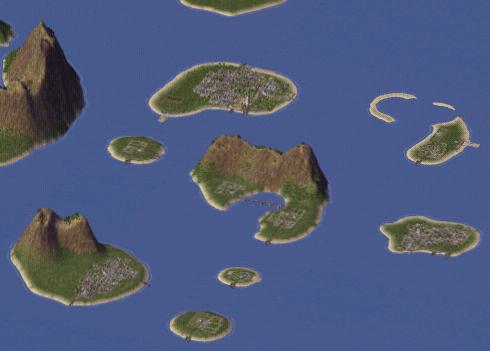

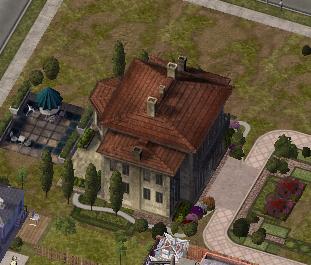
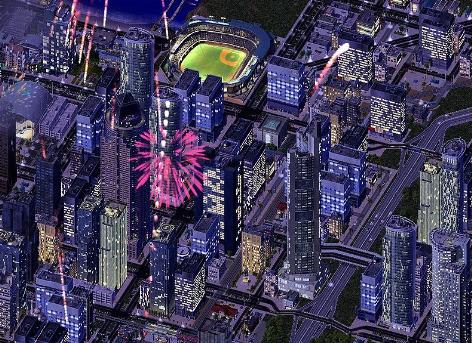
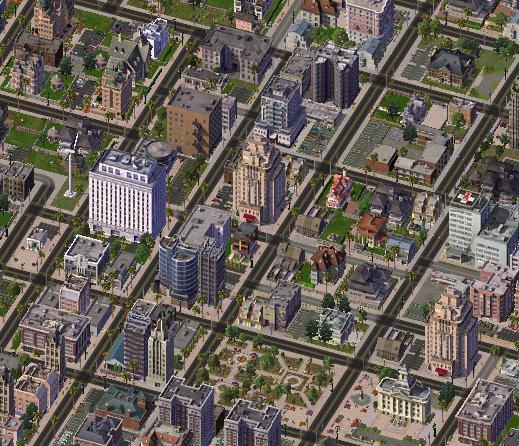
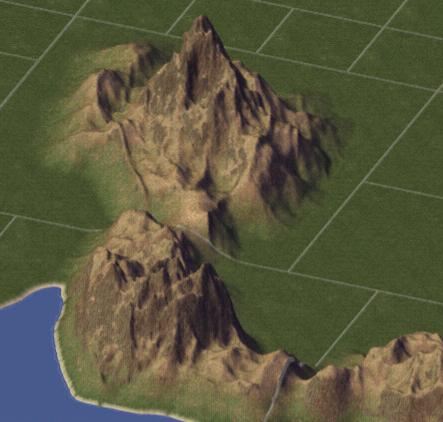
RELATED LINKS
SimCity 4 Official Website
Spiny McSpleen's Nifty SimCity 4 Terrains
HOME
SimCity 4 © 2003 EA Games. Page coding and layout by J Sebastian Perry (a.k.a. Spiny McSpleen), 2009 SebasTECH.






